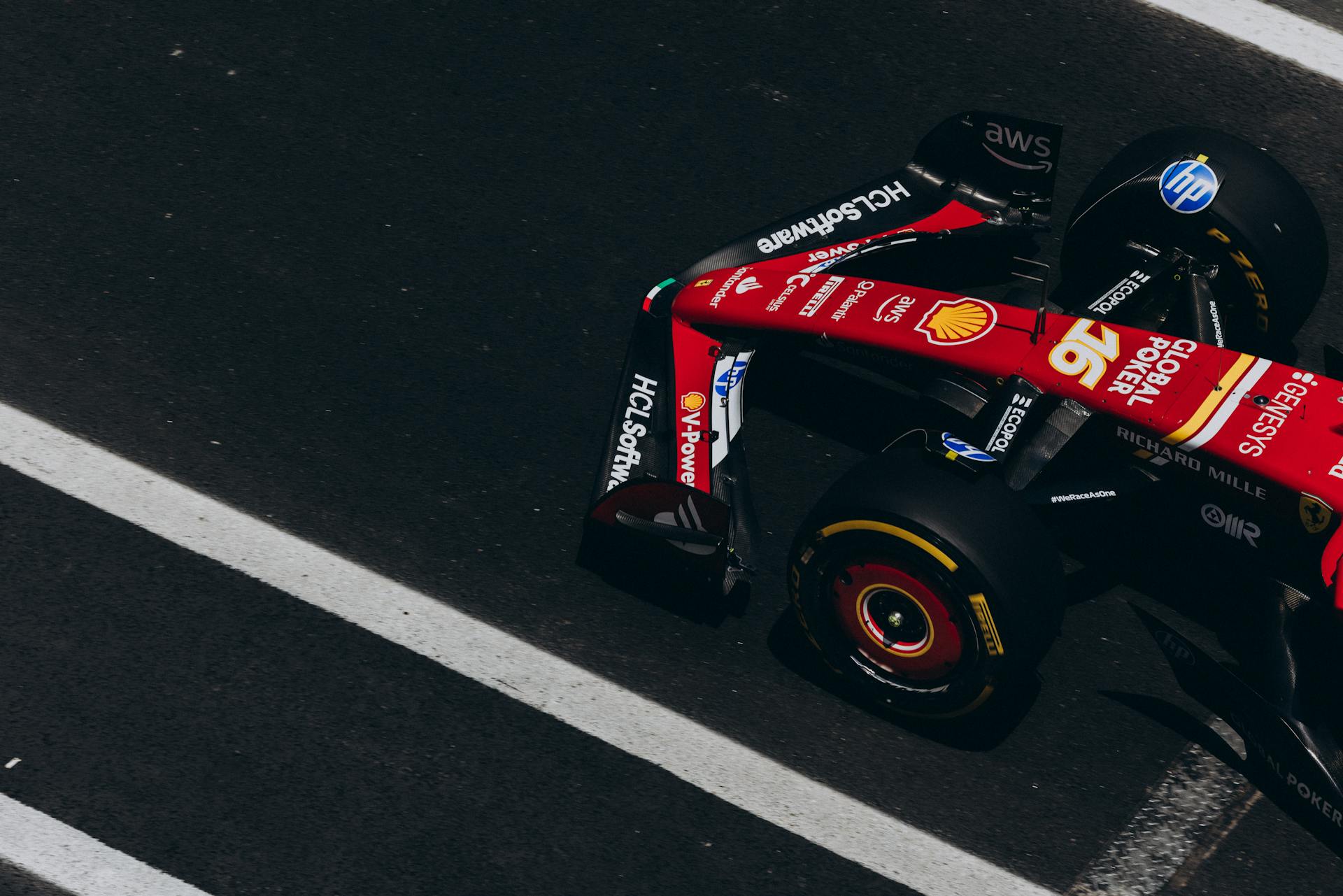
Preferred stock is a type of equity that offers a higher claim on assets and dividends than common stock. It's a popular choice for investors seeking predictable income.
The formula for calculating preferred stock is relatively simple: Dividend = Face Value x Dividend Rate. This formula helps investors understand the potential returns on their investment.
Understanding the Dividend Rate is crucial in this calculation, as it represents the percentage of the face value that investors receive as dividends. For example, if the face value is $100 and the dividend rate is 5%, the dividend would be $5.
In practice, this formula helps investors make informed decisions about their investments, taking into account the potential risks and rewards of preferred stock. By considering the face value and dividend rate, investors can better evaluate the attractiveness of preferred stock investments.
Readers also liked: How Are Stock Speculators Different from Stock Investors
What Is Preferred Stock?
Preferred stock is a type of stock that has a higher claim on assets and earnings than common stock, but typically doesn't come with voting rights.

It's often referred to as "junior" to bonds, meaning it has a lower claim on assets than bonds in the event of bankruptcy.
Preferred stockholders usually receive a fixed dividend payment, which can be attractive to investors seeking regular income.
The dividend is often paid out before common stockholders receive any dividends, making it a more stable investment option.
Preferred stock can be redeemed by the company at a specified price, which can be beneficial to investors who want to exit their investment.
For your interest: A Dividend Preference for Preferred Stock Means That
Preferred Stock Formula
The preferred stock formula is a straightforward calculation that helps determine the value of a share of preferred stock. It's based on the annual dividend per share, the required rate of return, par value, and dividend rate.
The formula is VP = P × dp / kp, where VP is the value/price of a share of preferred stock, DP is the annual dividend per share, kp is the required rate of return, P is the par value per share, and dp is the annual preferred dividend rate.
To calculate the cost of preferred stock, you can use the formula: Cost of Preferred Stock = Annual Preferred Dividend Payment / Current Share Price. This formula is analogous to the perpetuity formula used in bond valuation.
Broaden your view: Realty Income Preferred Stock Dividend
Formula
The formula for determining the value of a share of standard preferred stock is straightforward. It's VP = P × dp / kp, where VP is the value/price of a share of preferred stock, DP is the annual dividend per share of preferred stock, kp is the required rate of return, P is the par value per share of preferred stock, and dp is the annual preferred dividend rate.
The par value of the stock multiplied by the stated dividend rate equals the annual dividend per share. This is a key component of the formula.
The required rate of return reflects the market assessment of the risk inherent in the preferred stock. It's a critical factor in determining the value of the stock.
The value of preferred stock is equal to the present value of a growing perpetuity, where the preferred stock dividends grow at a constant rate g. This is due to the perpetual nature of preferred stock.
Curious to learn more? Check out: Shell Dividend Yield
Here's a breakdown of the components of the formula:
- VP: Value/price of a share of preferred stock
- DP: Annual dividend per share of preferred stock
- kp: Required rate of return
- P: Par value per share of preferred stock
- dp: Annual preferred dividend rate
This formula provides a clear and concise way to determine the value of a share of preferred stock.
Zero Growth Calculation
The cost of preferred stock with zero growth in dividend per share is calculated using the simple formula: kp, Zero Growth = DPS / Current Price of Preferred Stock.
To calculate the cost of preferred stock, you need to know the dividend per share (DPS) and the current price of the preferred stock. In our example, the DPS is $4.00 and the current price is $50.00.
Using the formula, we get kp, Zero Growth = $4.00 / $50.00 = 8.0%. This means that the cost of preferred stock with zero growth in dividend per share is 8.0%.
A fresh viewpoint: The Par Value per Share of Common Stock Represents
Example and Calculation
In the world of finance, understanding the value of a preferred stock is crucial. The value of a preferred stock at 8.5% required return equals $941.18.

The relationship between the required rate of return and the stated preferred dividend rate is a key concept. If the required rate of return is higher than the preferred dividend rate, the preferred stock will have a value below its par.
For example, a company issues "vanilla" preferred stock with a fixed dividend of $4.00 per share. The cost of preferred stock can be calculated by dividing the dividend per share by the current price of the stock. The cost of preferred stock is equal to 5.0% when the current price is $80.00.
There are different types of preferred stock, such as zero growth preferred stock. In this type, the dividend per share does not grow. The cost of preferred stock for zero growth can be calculated using the formula kp, Zero Growth = $4.00 / $50.00 = 8.0%.
Here are some examples of cost of preferred stock calculations:
Note that the value of a preferred stock will match the par value only when the preferred dividend rate and the required rate of return are equal.
Growth and Valuation
The cost of preferred stock with growth is higher than in the case with zero DPS, as a rational investor expects a higher rate of return. This directly impacts the pricing of the shares.
The formula to calculate the cost of preferred stock with growth is: kp, Growth = [$4.00 * (1 + 2.0%) / $50.00] + 2.0%. This formula takes into account the expected preferred dividend amount in Year 1 divided by the current price of the preferred stock, plus the perpetual growth rate.
To compute the value of preferred stock, you can use the present value of a perpetuity formula, which is simplified to: P = Fair Value of the stock. This formula is used when the preferred stock has a constant rate of dividend growth.
The Gordon Growth Model formula is also used to value preferred stock: P = Fair Value of the stock, D1 = Expected dividend amount for next year, r = Cost of Equity or the required rate of return, g = Expected growth rate of dividends (assumed to be constant). This formula is useful when the dividend has a history of predictable growth.
A higher preferred dividend rate than the required rate of return is a good indicator of a company with positive returns. For example, a preferred dividend rate of 12.5% and a required rate of return of 10% would result in a $6250 value for a $5000 par value share.
A different take: A Few Consideration When Investing for Preferred Stock Equity
Dividend Growth Rate Assumptions
We're going to explore the different dividend growth rate assumptions used in preferred stock calculations. In our modeling exercise, we'll be considering two scenarios:
The first scenario assumes zero growth in dividend per share (DPS), which means the dividend remains constant.
The preferred stock dividend per share (DPS) is $4.00.
The current price of preferred stock is $50.00.
In the second scenario, the dividend per share (DPS) grows at a perpetual rate of 2.0%.
Here's a breakdown of the two scenarios:
Valuation
Valuation is a crucial aspect of investing in preferred stock. The value of preferred stock can be simply calculated as a fraction of dividends and the discount rate, but other characteristics like being callable may be taken into account, varying the result.
For a simple straight case, preferred stock can be computed as shown below:
To compute the annual dividend per share of preferred stock, you need to multiply the face value of the stock by the stated dividend rate. This simplifies the formula to: DPS = Face Value x Dividend Rate.
Perpetuity is formed by the fixed dividend payments, which follow the nature of the preferred stock. In a situation where the preferred stock has a constant rate of dividend growth, the value is equal to the present value of a perpetuity.
The formula for computing the present value of a preferred stock takes into account perpetuity. If the dividend has a history of predictable growth, or you know that constant growth will occur, you can use the Gordon Growth Model formula:
For example, if the required rate of return is 10% and the expected growth rate of dividends is 2%, the formula would be:
P = D1 / (r - g)
This formula enables you to arrive at a weighted annual dividend per share of preferred stock by multiplying the face value of the stock and the stated dividend rate.
Frequently Asked Questions
What is the conversion formula for preferred stock?
To calculate the conversion price of preferred stock, divide its par value by the conversion ratio. This formula helps determine the value of common shares that preferred stock can be converted into.
Sources
- https://xplaind.com/650946/preferred-stock-valuation
- https://wealthyeducation.com/cost-of-preferred-stock/
- https://www.wallstreetprep.com/knowledge/cost-of-preferred-stock/
- https://www.investopedia.com/articles/fundamental-analysis/11/valuation-prefered-stock.asp
- https://www.carboncollective.co/sustainable-investing/preferred-stock-valuation
Featured Images: pexels.com


